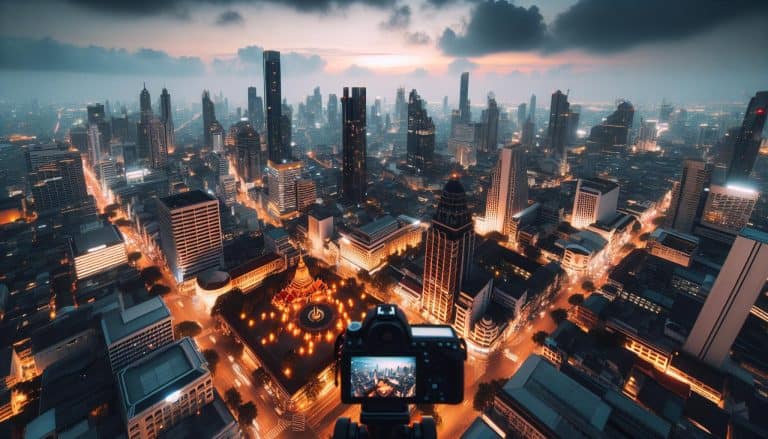Digital Nomad Southeast Asia: Best 2025 Guide

Hey there Digital Entrepreneur,
Imagine this: You’re sipping fresh coconut water straight from the source while replying to emails, all the while overlooking breathtaking rice terraces in Bali.
Or maybe you’re brainstorming your next big project in a trendy Kuala Lumpur café, surrounded by the buzz of city life.
Ready to experience the Digital Nomad Southeast Asia lifestyle?
Sounds like a dream, right?
Well, for thousands of digital nomads, this is their everyday reality!
Southeast Asia has become a haven for remote workers, offering an incredible blend of affordability, world-class infrastructure, and a vibrant cultural experience.
I’ve personally explored many of these digital nomad hotspots, and trust me, there’s never been a better time to join the movement.
I’ve spent some time exploring these digital nomad hotspots, and let me tell you – there’s never been a better time to make the leap.
You know, according to recent studies, the rise of digital nomad Southeast Asia has been exploding since 2023, and there’s a really good reason for it!
With its incredibly low cost of living compared to many Western countries, amazing co-working spaces with blazing-fast internet, and a diverse and welcoming culture.
It’s no wonder why Southeast Asia is attracting remote workers from all over the world.
For Digital Nomad Southeast Asia, is quickly becoming THE world’s top destination!
So, you’re wondering, when its the best time to travel to Southeast Asia to experience this for yourself?
In this guide, we’ll explore why Southeast Asia is the perfect playground for digital nomads.
I’ll highlight some of the top destinations and share essential tips to help you make the most of your nomadic lifestyle in 2025.
Key Takeaways
- Southeast Asia offers the perfect blend of affordability and quality of life for digital nomads in 2025.
- Top destinations include Bali, Chiang Mai, Da Nang, and Kuala Lumpur, each with unique benefits.
- Average monthly costs range from $800-2000, including accommodation, food, and coworking. spaces
- Most countries offer various visa options, from tourist visas to digital nomad-specific programs.
Cost of Living vs. Quality: Digital Nomads in Southeast Asia

Let me paint you a another picture: imagine spending your Monday morning sipping a perfect flat white ($2) at a gorgeous beach-front café in Kual Lumpur.
While back home your friends are dropping $7 on their daily Starbucks trash coffee.
That’s the kind of lifestyle upgrade I’m talking about when it comes to Southeast Asia!
Think of Southeast Asia as the “cheat code” for digital nomads.
You know how in video games, you sometimes find that perfect power-up that completely changes the game?
That’s exactly what this region is for remote workers.
Let’s dive in deeper, my friend!
The Real Deal on Costs (And Why They’ll Blow Your Mind)
Here’s the thing that still amazes me about Southeast Asia – your money literally grows wings here.
Let’s get super specific with the numbers (because I know that’s what I wanted when I was starting out):
In Chiang Mai, Thailand, I’ve found that $1,500/month gets you what would cost $4,000+ in most Western cities.
We’re talking:
- A modern one-bedroom apartment with a pool ($500/month)
- Daily café-hopping and coworking ($150/month)
- Eating out for almost every meal ($300/month)
- Weekly massages ($100/month)
- Scooter rental ($80/month)
- Health insurance ($70/month)
- Fun money for weekend trips and activities ($300/month)
And the best part?
This isn’t just about saving money – it’s about upgrading your lifestyle!
You’re not just living cheaper; you’re living better.
The “Lifestyle Arbitrage” Secret
Here’s an insider secret I wish someone had told me earlier: what I call the “lifestyle arbitrage” effect.
If you’re earning in USD, EUR, or GBP, you’re not just saving money – you’re buying time and experiences.
Think about it this way: when a quality meal costs $3 instead of $20, you’re not just saving $17.
You’re buying the freedom to eat out more often, try new things, and never stress about restaurant bills.
Some real-world examples I’ve experienced:
- One-hour traditional massage in Bali: $10 to $20 (vs. $100+ in the US)
- Monthly cleaning service: $100 (vs. $300+ in London)
- Premium gym membership with luxury amenities: $40/month (vs. $150+ in NYC, I am low balling it)
Quality of Life Upgrades You Didn’t Know You Needed
But here’s where it gets really interesting – it’s the unexpected upgrades that make the biggest difference.
Remember how Marie Kondo talks about things that “spark joy”?
Southeast Asia gives you daily joy-sparking moments without breaking the bank 💎
- Time Wealth: When basic services are affordable, you suddenly have time for:
- Daily pool swims before work
- Regular massages for stress management
- Long dinners with friends without watching the bill
- Lifestyle Access: Things that are “luxuries” back home become everyday experiences:
- Beach club days ($10 entry vs. $100+)
- Personal training sessions ($20 vs. $80+)
- Weekend island getaways ($100 vs. $500+)
The Hidden Benefits Nobody Talks About
The best perks of Southeast Asian living aren’t even about money.
Here’s what I’ve discovered:
- Weather Upgrade:
- Goodbye, seasonal depression!
- Year-round warmth means more vitamin D and better mood (though let’s be real, you’ll need to embrace the occasional tropical rain shower).
- Fresh Food Access:
- Daily markets with fresh fruits and vegetables that actually taste like they should.
- Adventure on Tap:
- When weekend trips to temples, islands, or mountains are both affordable and accessible, life gets more interesting by default.
Common Myths vs. Reality Check
Let’s bust some myths I’ve encountered:
Myth: “You get what you pay for – it must be lower quality.”
Reality: Many services and accommodations in Southeast Asia match or exceed Western standards, especially in major hubs.
Myth: “It’s only good for short-term stays.”
Reality: Modern infrastructure and strong expat communities make long-term living completely viable.
Myth: “You’ll miss Western comforts.”
Reality: Major cities have all the amenities you need, often with better service than back home.
Top 10 Digital Nomad Hotspots: From Bali’s Beach Offices to Chiang Mai’s Cafes
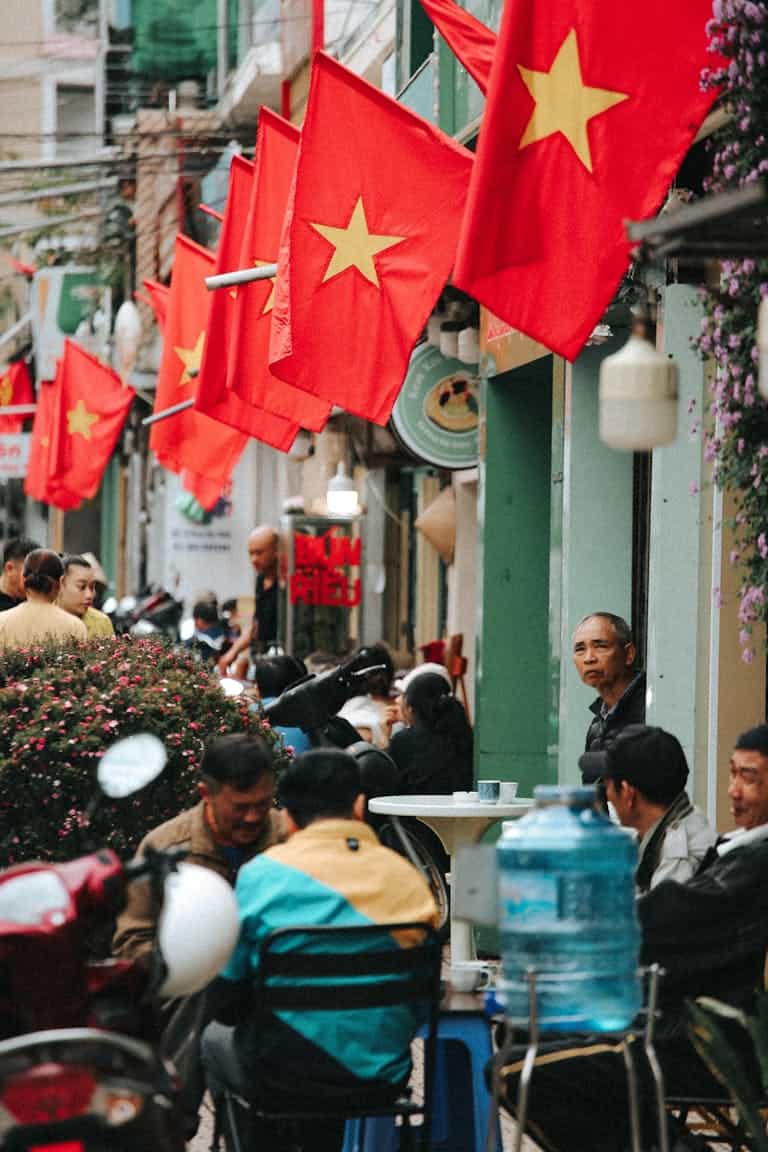
Southeast Asia has become a haven for digital nomads, offering a captivating blend of vibrant cultures, stunning landscapes, and affordable living.
Top 10 Digital Nomad Paradises in Southeast Asia
- Bali, Indonesia:
- Why it’s hot: Bali is synonymous with digital nomad life.
- From the bohemian vibes of Canggu to the spiritual heart of Ubud, the island boasts incredible co-working spaces, luxurious villas, and a thriving wellness scene.
- Unique Attractions: Rice paddies, volcanic mountains, world-class surfing, and a vibrant arts scene.
- Chiang Mai, Thailand:
- Why it’s hot: This charming city in northern Thailand offers a slower pace of life compared to bustling Bangkok.
- It’s known for its ancient temples, lush mountains, and a large expat community.
- Unique Attractions: Elephant sanctuaries, jungle trekking, and delicious street food.
- Ho Chi Minh City, Vietnam:
- Why it’s hot: A dynamic metropolis with a fascinating history, Ho Chi Minh City offers a unique blend of old-world charm and modern energy.
- Unique Attractions: bustling markets, delicious and affordable cuisine, and a thriving startup scene.
- Bangkok, Thailand:
- Why it’s hot: The City of Angels is a vibrant melting pot of cultures, offering incredible food, world-class shopping, and a thriving nightlife.
- Unique Attractions: Grand palaces, stunning temples, and a vibrant river life.
- Phuket, Thailand:
- Why it’s hot: This island paradise is famous for its beautiful beaches, luxurious resorts, and vibrant nightlife.
- Unique Attractions: World-class diving and snorkeling, stunning limestone cliffs, and delicious seafood.
- Canggu, Bali, Indonesia:
- Why it’s hot: A trendy beach town with a strong digital nomad community, Canggu offers a vibrant cafe scene, world-class surf breaks, and a laid-back atmosphere.
- Unique Attractions: Surfing, yoga studios, and a growing community of health-conscious cafes and restaurants.
- Da Nang, Vietnam:
- Why it’s hot: A rapidly developing city with stunning beaches, delicious food, and a growing digital nomad scene.
- Unique Attractions: Marble Mountains, My Khe Beach, and a vibrant nightlife.
- Kuala Lumpur, Malaysia:
- Why it’s hot: A modern metropolis with a diverse culture, Kuala Lumpur offers a mix of skyscrapers, lush parks, and delicious food.
- Unique Attractions: Petronas Twin Towers, Batu Caves, and a vibrant arts scene.
- Penang, Malaysia:
- Why it’s hot: This island offers a unique blend of Malaysian, Chinese, and Indian cultures, with delicious food, beautiful beaches, and a relaxed atmosphere.
- Unique Attractions: George Town, a UNESCO World Heritage Site, and stunning street art.
- Cebu City, Philippines:
- Why it’s hot: A vibrant city with a growing digital nomad scene, Cebu City offers a mix of modern conveniences and a relaxed island vibe.
- Unique Attractions: Beautiful beaches, diving and snorkeling, and a vibrant nightlife.
This list provides a starting point for your digital nomad adventures in Southeast Asia.
Each destination offers unique experiences and opportunities to explore, work, and connect with other travelers.
Disclaimer: This information is for general guidance only and may not reflect the most up-to-date travel conditions.
Fast Internet & Workspaces: Southeast Asia’s Best Co-working Hubs Revealed
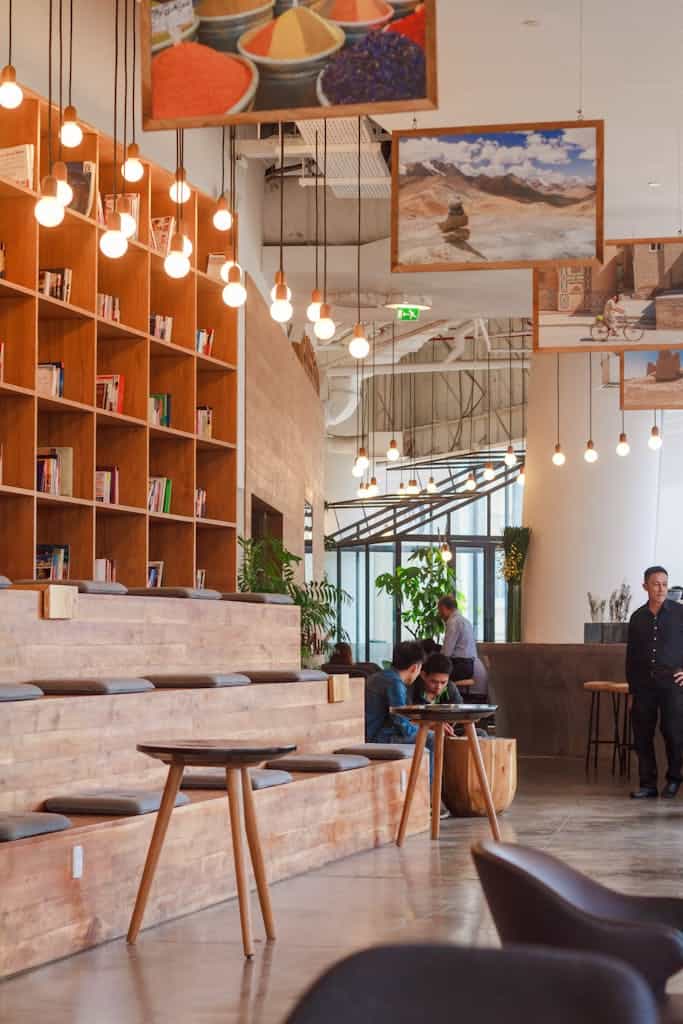
Southeast Asia is home to some of the best Coworking Spaces and internet connectivity that make it a top destination for digital nomads and remote workers.
Let’s break down the key factors and the standout cities for work environments.
Fast Internet Connectivity
Southeast Asia is a digital nomad’s dream when it comes to internet!
Countries like Thailand, Vietnam, and the Philippines are known for their fast, reliable connections, especially in major urban centers.
Cities like Bangkok, Ho Chi Minh City, and Manila boast robust infrastructures catering to digital nomads
Even more remote locations, like Siargao in the Philippines, are catching up with fast internet, which is ideal for remote work.
Don’t sleep on Malaysia! Kuala Lumpur has excellent infrastructure, and cities like Penang and George Town are increasingly popular with digital nomads thanks to their fast and affordable internet.
Think about working from a charming cafe in Penang with high-speed Wi-Fi while enjoying delicious local food.
Sounds pretty idyllic, right?
Even more remote spots in the region are catching up, making it easier than ever to work from anywhere in this beautiful part of the world.
6 Best Coworking Spaces in Southeast Asia
- Bangkok, Thailand:
- Bangkok is one of the leading cities in Southeast Asia for remote workers.
- It has a wide range of coworking spaces such as The Work Loft, Launchpad, and WeWork, all offering excellent facilities, high-speed internet, and networking opportunities.
- Ho Chi Minh City, Vietnam:
- Known for its bustling business environment, Ho Chi Minh City is home to modern coworking spaces like Dreamplex and The Hive.
- These spaces are not only affordable but also offer impressive internet speeds.
- Manila, Philippines:
- Manila has quickly become a hub for remote work in Southeast Asia, thanks to its large number of coworking spaces such as Acceler8 in Makati.
- The city also offers reliable high-speed internet, which is a big draw for those looking to focus on their work.
- Bali, Indonesia:
- Bali has earned its place as a digital nomad paradise, especially in areas like Ubud and Canggu.
- Dojo Bali and Tropical Nomad offer inspiring environments with excellent connectivity, making it a top choice for many remote workers.
- Kuala Lumpur, Malaysia:
- With modern coworking spaces like Common Ground and The Co.
- Kuala Lumpur has become an emerging hotspot for digital nomads, providing a blend of affordability, good infrastructure, and high-speed internet.
- Singapore:
- While slightly more expensive than other cities in Southeast Asia, Singapore offers premium coworking spaces like The Working Capitol and WeWork.
- Alongside some of the fastest internet connections in the region.
Other Notable Cities for Work Environments
- Chiang Mai, Thailand:
- Known for being affordable with a relaxed vibe, Chiang Mai is often mentioned as a top destination for remote workers.
- Spaces like Punspace cater specifically to digital nomads with strong internet connections.
- Hanoi, Vietnam:
- Another Vietnamese city with great infrastructure for remote work.
- Hanoi offers spaces like Toong with modern amenities and fast internet.
Whether you’re after a beachside location or a bustling city, there are plenty of options to choose from to suit your productivity needs.
Okay, so I hope you’re thinking of becoming a digital nomad in Southeast Asia, huh? Awesome!
But let’s be real, keep this in mind: fast internet is a non-negotiable.
It’s tough to write a compelling blog post when you’re constantly fighting with a slow internet connection.
Think of it like this: reliable internet is the engine of your digital nomad life. Without it, you’re basically trying to drive a car with a flat tire.
You can still get there, but it’s gonna be a bumpy ride.
Canggu, Bali, for example, has some seriously impressive digital nomad hubs.
- You’ll find trendy cafes with blazing-fast Wi-Fi everywhere you turn. It’s like a digital nomad playground.
Chiang Mai, Thailand is another winner.
- The cafes there are amazing – think cozy corners with comfy chairs and strong coffee.
Plus, the cost of living is pretty reasonable, so you can actually afford to splurge on that extra large latte.
But here’s the thing: don’t just rely on cafes.
Invest in a good SIM card with a decent data plan. It’s like having your own personal Wi-Fi hotspot.
And if you’re really serious about productivity, consider renting a serviced apartment or a co-living space.
Many of these places have dedicated co-working areas with high-speed internet and even things like printers and meeting rooms.
It’s like having your own mini-office, but with a much cooler view.
Pro Tip:
- Do some research before you arrive. Check online forums and reviews to see what other digital nomads are saying about internet speed and reliability in specific areas.
- You can also use tools like Speedtest.net to check internet speeds at different locations
Visa Secrets: How to Legally Stay Long-Term in Southeast Asian Countries
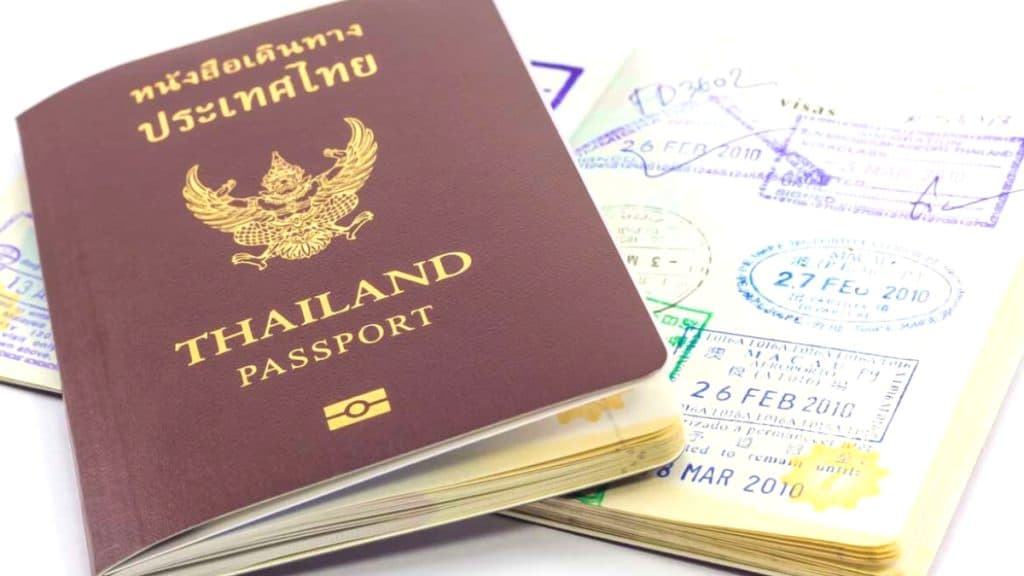
When it comes to staying long-term, understanding digital nomad visa Southeast Asia varies by each country.
As each country has its own visa options, but they all offer flexible solutions for remote workers.
Here’s a breakdown of the visa options for Thailand, Bali (Indonesia), Malaysia, Singapore and Vietnam along with tips for staying legally:
Thailand
Thailand has been making waves with its digital nomad visa options.
The Destination Thailand Visa (DTV), launched in 2024, is a prominent choice for remote workers.
It’s designed to allow long-term stays of up to 5 years for digital nomads, provided you meet certain income requirements (around $800-1,000 USD/month).
Other options include:
- Tourist Visa: You can extend it for up to 6 months, and sometimes it’s possible to do a “border run” to extend it further, though this is not a guaranteed option long-term.
- O-A Retirement Visa: For those over 50, this visa is for long-term stays but requires proof of income or savings.
To avoid issues, ensure you adhere to visa conditions and extensions.
Overstaying in Thailand can lead to fines or deportation, so always double-check expiration dates and extension possibilities.
Bali (Indonesia)
Bali, part of Indonesia, is a paradise for digital nomads.
While Bali doesn’t have a specific digital nomad visa yet, there are several ways to stay long-term:
- B211A Tourist Visa: This visa is popular for remote workers and can be extended for up to 6 months.
- Social Cultural Visa (Sosial Budaya): This can also be extended for up to 6 months and is often used by digital nomads.
- KITAS Work Visa: If you plan on working with a local company, this is a longer-term work visa, but it requires a sponsoring employer.
Malaysia
Tourists generally require a Social Visit Pass, while skilled professionals can apply for an Employment Pass.
Ensure your stay aligns with visa conditions and register with immigration if necessary.
- Visa Options:
- Social Visit Pass (STP): For tourism, visiting friends/family.
- Employment Pass: For skilled professionals.
- Tips for Staying Legally:
- Adhere to Visa Conditions: Ensure your stay aligns with the purpose and duration of your visa.
- Register with Immigration: If staying longer than permitted, apply for an extension or change of status.
- Maintain Valid Documents: Carry your passport and visa at all times.
Singapore
Short-Term Visit Passes are common for tourism and business.
Skilled professionals can obtain Employment Passes. Always respect immigration laws and avoid overstaying.
- Visa Options:
- Short-Term Visit Pass: For tourism, business meetings, and visiting friends/family.
- Employment Pass: For skilled professionals.
- Tips for Staying Legally:
- Respect Immigration Laws: Abide by visa conditions and immigration regulations.
- Avoid Overstaying: Depart before your visa expires or apply for an extension if necessary.
- Maintain Contact with Authorities: Keep your contact information updated with immigration authorities if applicable.
To stay legally, it’s crucial to adhere to the extension rules for these visas.
Overstaying can result in fines, deportation, or a ban from re-entering the country.
Vietnam
Vietnam has been making efforts to attract digital nomads, and while there isn’t a specific visa tailored for remote workers, you can still live and work legally for extended periods.
- Tourist Visa: Available for 30 days, and you can extend it multiple times, although it’s a bit tricky to keep doing so for long stretches.
- E-Visa: Available for citizens of many countries, and it’s good for 30 days with a single entry.
- Business Visa: If you’re working with a local company or setting up a business in Vietnam, a business visa is an option.
To stay legally in Vietnam, make sure to extend your visa before it expires and avoid overstaying.
Like in Thailand and Bali, overstaying can lead to fines or being banned from re-entry.
4 General Tips to Avoid Visa Issues
- Know Your Visa Type: Make sure you are on the right visa for your type of work, whether that’s a business visa, tourist visa, or a remote worker visa.
- Track Visa Expirations: Set reminders for visa expiration dates and plan for extensions well in advance.
- Avoid Overstaying: Overstaying visas can lead to hefty fines or deportation. Always leave the country or apply for extensions before your visa expires.
- Seek Legal Help: If you’re unsure about the visa requirements or need help with paperwork, it’s always a good idea to consult a local immigration expert.
By understanding the visa requirements for each country and staying up to date with any changes to policies, you can legally stay in Southeast Asia as a digital nomad while avoiding any potential issues.
Living Like a Local: Monthly Budgets & Accommodation Hacks
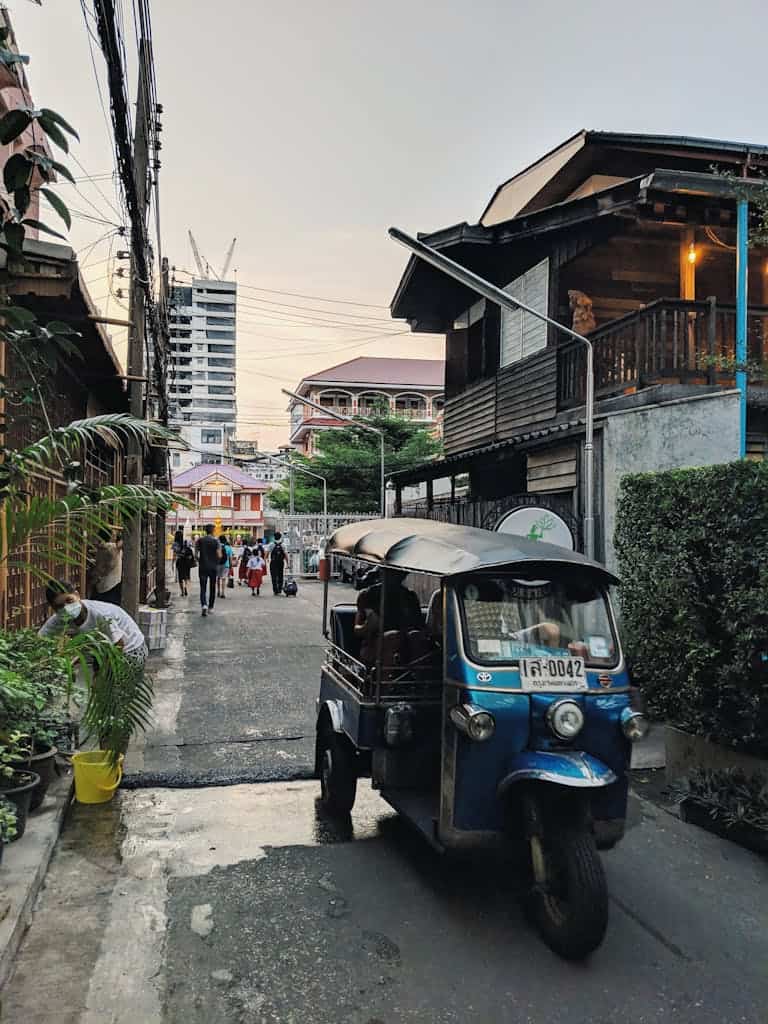
Living Like a Local on a Budget: Southeast Asia Accommodation & Cost-Saving Tips
When it comes to living in Southeast Asia, one of the most exciting challenges is balancing the joy of exploring a new culture with managing a budget.
As digital nomads or travelers, we all dream of finding that sweet spot where affordability and comfort meet, and trust me, it’s definitely possible.
Let me walk you through some of the tips I’ve learned along the way.
First things first: accommodation is a game-changer when it comes to living like a local on a budget. Don’t fall into the trap of expensive hotels or fancy resorts.
There are so many budget-friendly options like hostels, guesthouses, and homestays that will not only save you money but also help you connect with locals and fellow travelers.
In places like Chiang Mai, Bali, or Ho Chi Minh City, these accommodations are abundant, and you’ll often find something cozy for under $10-15 a night.
I’ll admit, I’ve made the mistake of staying in a luxury hotel once.
I was in Bali, feeling like I had to “treat myself.”
But after a few days of eye-watering bills, I realized that the money I was spending could have been used to do so many fun activities – like taking a cooking class or joining a surfing lesson.
Lesson learned: while the luxury feels nice, it’s the authentic experiences that are more valuable.
Now, if you’re thinking of staying longer in one place, finding monthly rentals is the best way to go. Websites like Airbnb, Booking.com, or local Facebook groups often have great deals on long-term stays.
Sometimes, even walking around the neighborhood and asking about availability can get you better deals.
Pro tip: try to find a place away from the touristy hotspots. You’ll not only save money but also get a more local experience.
In Bali, for example, renting a villa in Canggu can be pricey, but just a short scooter ride away in a nearby village, you’ll find prices drop significantly.
Food – oh, the food!
Southeast Asia is a paradise for anyone who loves eating well for cheap.
Street food is delicious, diverse, and super affordable.
In Vietnam, a bowl of pho might cost you just a dollar or two, and in Thailand, you can grab pad thai for under $3.
But beyond just street food, check out local markets where you can buy fresh ingredients to cook yourself.
Not only will it save you cash, but you’ll also get to try your hand at cooking local dishes.
I’ve spent entire afternoons wandering through markets in Hanoi or Bangkok, buying produce, and trying to recreate the flavors in my kitchen.
It’s one of the most rewarding (and budget-friendly) things you can do.
Transportation is another area where you can save big
Instead of booking expensive taxis or tours, opt for local transport like buses, trains, or even motorbikes.
In Vietnam, Malaysia or grabbing a Grab (a Southeast Asia version of Uber) is a cheaper option than hailing a cab, and renting a scooter can cost as little as $5 a day.
It’s a great way to explore the countryside or hidden gems in the city while keeping costs down.
Lastly, let’s talk about budgeting
It’s easy to get swept up in the excitement of travel and overspend, but if you set a realistic monthly budget and stick to it, you’ll stretch your money much further.
I like to keep a rough budget for accommodation, food, transportation, and activities.
Trust me, by tracking your expenses and being mindful of where you spend, you’ll avoid those dreaded “I can’t believe I spent THAT much” moments.
Living like a local on a budget in Southeast Asia isn’t just about pinching pennies – it’s about embracing the lifestyle, exploring off-the-beaten-path locations, and truly immersing yourself in the culture.
The more you interact with locals, the more authentic your experience becomes.
So grab your backpack, get out there, and start living like a local – your wallet will thank you later!
Southeast Asia is known for being an affordable destination, and if you’re a digital nomad or a traveler on a budget, it’s easy to live like a local without breaking the bank.
Here are some practical tips for affordable housing and budgeting in the region.
5 Affordable Accommodation Options in Southeast Asia
- Hostels and Guesthouses:
- In many Southeast Asian countries, hostels and guesthouses are common and very affordable.
- Places like Vietnam, Cambodia, and Thailand offer dormitory-style rooms for as little as $5–$10 a night.
- For more privacy, you can find basic private rooms starting at $10–$20.
- Homestays and Airbnb:
- If you prefer a more local experience, homestays are a great option.
- They’re not only affordable but give you the chance to connect with locals.
- Airbnb is also widely used in Southeast Asia, and you can find rooms or apartments for $20–$30 per night in places like Bali, Chiang Mai, or Ho Chi Minh City.
- Long-Term Rentals:
- If you’re planning to stay for a few months, look for long-term rentals.
- In cities like Ubud (Bali) or Chiang Mai (Thailand), you can rent a small apartment for $200–$400 per month.
- This is often cheaper than short-term stays, and many landlords offer discounts for longer stays.
- Co-living Spaces:
- A great option for digital nomads is co-living spaces.
- These are popular in places like Canggu (Bali) or Kuala Lumpur (Malaysia).
- Co-living offers both accommodation and a community, with prices typically ranging from $300 to $700 per month, depending on the location and facilities.
4 Budgeting Tips for Southeast Asia
- Food:
- Eating like a local is one of the easiest ways to save money.
- Street food is incredibly cheap and delicious in places like Vietnam, Thailand, and Indonesia.
- You can enjoy meals for $1–$3 per dish. If you prefer cooking your own food, local markets offer fresh produce at very low prices.
- Transportation:
- Public transport is affordable in most cities.
- Bali and Vietnam have affordable motorbike rentals, and in places like Bangkok and Hanoi, public buses and metro systems are cost-effective ways to get around.
- A daily budget of $5–$10 for transport should be sufficient in most cities.
- Living Like a Local:
- To stretch your budget, live as the locals do.
- Avoid tourist traps and high-end restaurants.
- Shopping in local markets, using local transportation, and staying in non-touristy neighborhoods will help you live on a budget while immersing yourself in the culture.
- Workspaces:
- If you’re working remotely, look for coworking spaces that offer long-term memberships or daily passes.
- Prices range from $5 to $15 per day depending on the location. Many cities offer affordable coworking spaces with good internet speeds.
Budget Hacks for Digital Nomads
- Travel Slowly:
- Moving around frequently can rack up costs with transportation and accommodation.
- Stay in one place for a longer period to reduce overall expenses.
- Off-Season Travel:
- Visit during the low season (usually rainy season in many countries) when accommodation prices drop and there are fewer tourists.
- Use Local Apps:
- For things like accommodation and transportation, use local apps and websites (e.g., Agoda, Grab) to find the best deals.
- These often offer discounts for users in the region.
With careful planning and a local mindset, living in Southeast Asia on a budget is totally achievable.
It will allow you to enjoy all the vibrant culture, stunning landscapes, and delicious food the region has to offer without breaking the bank.
Digital Nomad: Where to Find Your Tribe in Southeast Asia?
Southeast Asia has become a hotspot for digital nomads, with a number of cities offering not just affordable living, but also thriving communities of remote workers.
Here’s a guide to some key locations with strong nomadic communities and tips for networking and building connections.
6 Key Locations with Thriving Digital Nomad Communities
- Chiang Mai, Thailand
- Chiang Mai has long been a favorite among digital nomads.
- Its combination of affordable living, stunning nature, and excellent coworking spaces make it an ideal base for remote workers.
- The city is known for its vibrant community of nomads, entrepreneurs, and creatives.
- Places like Punspace and Camp Chiang Mai are central to the community where you can meet fellow digital nomads.
- Bali, Indonesia
- Bali, especially Canggu, has exploded in popularity among digital nomads.
- The island offers an excellent work-life balance with its many coworking spaces (like Dojo Bali) and a laid-back lifestyle.
- Bali’s strong nomad network includes digital nomad meetups, events, and workshops, making it easy to connect with like-minded individuals.
- Ho Chi Minh City, Vietnam
- Ho Chi Minh City offers a mix of fast internet, a low cost of living, and a growing remote work community.
- The expat and digital nomad community is centered around cafes, coworking spaces, and events.
- There are numerous groups, both online and offline, where you can meet other nomads and share tips and advice.
- Kuala Lumpur, Malaysia
- Kuala Lumpur is an emerging digital nomad hub with a good blend of coworking spaces, affordable living, and a multicultural atmosphere.
- The city also hosts frequent networking events and meetups, which are perfect for building relationships with other digital nomads.
- The Co. and WeWork are great coworking spaces to start your journey.
- Manila, Philippines
- Manila is home to an increasing number of digital nomads, drawn by the country’s affordable cost of living and English-speaking population.
- There are numerous coworking spaces, and the community is growing rapidly.
- Popular spaces like Acceler8 in Makati are great places to meet people.
- Singapore
- Although it’s one of the more expensive cities in Southeast Asia.
- Singapore has a thriving digital nomad scene due to its advanced infrastructure, fast internet, and business opportunities.
- The Nomad Summit and various coworking spaces like The Working Capitol provide ample opportunities for networking.
5 Tips for Networking & Building Digital Nomad Connections in Southeast Asia
- Join Co-working Spaces:
- Co-working spaces are hubs for digital nomads.
- They host regular events like workshops, lunches, and meetups, making them ideal places to meet new people and network.
- Attend Nomad Events:
- Many cities host events like Nomad Meetups, Digital Nomad Summits, or even informal coffee meetups.
- These are perfect for meeting fellow remote workers and entrepreneurs.
- Use Facebook Groups and Slack Channels:
- There are many Facebook groups and Slack channels dedicated to digital nomads in Southeast Asia.
- Joining these groups can help you connect with others before even arriving in a new city.
- Be Open to Collaboration:
- Many digital nomads are entrepreneurs or freelancers, so collaboration is key.
- Whether it’s working on a side project together or sharing tips about local services, collaborating fosters strong community bonds.
- Go Local:
- While there are plenty of digital nomads in cafes and coworking spaces, exploring local markets, cultural sites, and local meetups can help you connect with people outside the typical “nomad bubble.”
Building connections in Southeast Asia’s digital nomad scene is about being proactive, attending events, and engaging in the community.
With its rapidly growing network of digital nomads, Southeast Asia is the perfect place to find your tribe.
Work-Life Balance: Adventures & Experiences Between Zoom Call
Maintaining work-life balance as a digital nomad in Southeast Asia is all about striking a perfect blend between productivity and enjoying your surroundings.
5 tips to make the most of your time:
- Work in the Mornings, Explore in the Afternoons
- Many digital nomads find that their most productive hours are in the morning, so they schedule their work early in the day.
- Once the work is done, they dive into adventures!
- In cities like Chiang Mai, Bali, and Ho Chi Minh City, you can work from a coworking space in the morning and explore vibrant local markets, take a cooking class, or enjoy a bike tour in the afternoon.
- Embrace Nature
- If you’re based in places like Bali or Koh Lanta, you’re never too far from nature.
- You can take a quick hike, relax at a beach, or enjoy water activities like snorkeling or kayaking.
- These kinds of experiences help you de-stress and stay refreshed for your next work session.
- Join Group Activities or Socialize
- Digital nomad hubs like Ubud (Bali) or Canggu offer ample opportunities to socialize, whether through group yoga sessions, coworking community meetups, or surfing lessons.
- Networking with fellow nomads can help you find a good work-life balance by exchanging tips and experiences.
- Take Advantage of Flexible Schedules
- Remote work gives you the flexibility to take breaks when needed.
- If you’re in a place like Da Nang or Siargao, you can start your day early, work until noon, and then use the afternoon to unwind with activities like visiting temples, hiking in the mountains, or exploring hidden beaches.
- Stay Active with Local Sports
- Southeast Asia offers various options for staying active.
- You can enjoy yoga in Bali, kickboxing in Thailand, or water sports like surfing in Vietnam. Physical activity is a great way to reset your mind and recharge for the next work session.
By planning your work hours efficiently and taking full advantage of your location’s activities, you can truly enjoy the nomadic lifestyle while staying productive.
It’s all about managing your time well and integrating relaxation and adventure into your daily routine.
Navigating Healthcare in Southeast Asia as a Digital Nomad
Living as a digital nomad in Southeast Asia can feel like a dream—exotic beaches, affordable living, and endless adventures.
But let’s be real: getting sick in a foreign country can be a total nightmare if you’re not prepared.
From figuring out healthcare systems to choosing the right insurance, navigating this maze doesn’t have to be overwhelming.
Here’s what I’ve learned from both personal experience and a few “why didn’t I plan for this?” moments.
Understanding Healthcare Systems in Southeast Asia
First off, healthcare in Southeast Asia is a mixed bag.
Southeast Asia is a popular destination for Medical Tourism, with Thailand, Malaysia, and Singapore being the top destinations
Thailand, Malaysia, and Singapore have world-class medical facilities that rival—or even surpass—Western standards.
I had a friend who needed surgery while in Bangkok, and their experience at Bumrungrad International Hospital was smoother than anything they’d had back home in the U.S.
On the flip side, more remote areas, like small towns in Indonesia or Laos, might only have basic clinics.
That’s fine for a minor cold, but anything serious might require a trip to a larger city—or even a medevac to another country.
The key is knowing what’s available locally and planning accordingly.
Always keep a list of top-rated hospitals or clinics in the cities you frequent. A quick Google search for “expat-friendly hospital in [city]” can save you time in an emergency.
Tips On Finding Quality Care in Southeast Asia: It’s All About Preparation
When you’re sick abroad, the last thing you want is to waste time figuring out where to go. Before moving to or visiting a new country, spend an afternoon researching:
- Hospital Reviews: Look for hospitals with international accreditation, like JCI.
- Joint Commission International, is a non-profit organization that accredits hospitals and other healthcare organizations worldwide.
- Local Expat Groups: Join Facebook groups or expat forums to get recommendations.
- Pharmacies: Many Southeast Asian countries have pharmacies where you can get over-the-counter meds without a prescription.
Also, don’t underestimate the power of local knowledge.
I once caught hay fever while traveling to Vietnam. The boutique hotel owner recommended a an awesome small clinic nearby, and it was a lifesaver
Why its Crucial Choosing Travel Insurance?
Let’s talk insurance.
If you’re skipping this, you’re playing a dangerous game.
After my friend had a scooter accident in Bali he was left with a hefty hospital bill. I always warn him to get travel insurance when traveling abroad.
Spoiler: travel insurance would’ve covered it, but he was too cheap to get it beforehand. Lesson learned.
3 Tips to keep in mind, when picking travel insurance:
- Emergency Evacuation: Make sure your plan covers medical evacuation. Getting airlifted out of a remote area can cost upwards of $50,000.
- Adventure Sports: Planning to surf in the Philippines or dive in Thailand? Look for coverage that includes these activities.
- Direct Billing: Some plans let hospitals bill the insurance company directly, so you don’t have to pay out of pocket first.
Popular providers that cater specifically to travelers and digital nomads:
They’re affordable and easy to manage online.
Think of travel insurance like a seatbelt. You don’t plan to crash, but if it happens, you’ll be grateful you buckled up.
Similarly, researching healthcare in advance is like mapping out rest stops on a long road trip—it’s not the fun part, but it saves you from getting stranded.
Staying healthy as a Digital Nomad Southeast Asia is all about preparation.
With the right insurance, a little research, and a go-with-the-flow attitude, you can focus less on “what ifs” and more on enjoying this incredible part of the world. 🌏
Tech Essentials: Setting Up Your Mobile Office in Southeast Asian Cities
Your Mobile Office: Tech Essentials for Southeast Asia Digital Nomads
Setting up a mobile office isn’t as intimidating as it sounds—trust me.
I’ve fumbled through too many airport security checks to count, learning what tech gear I actually needed.
When you’re working remotely in Southeast Asia, whether in Bali, Bangkok, or beyond, the right setup can make or break your productivity.
Must-Have Tech and Gear for Remote Work Southeast Asia
First things first: don’t skimp on a reliable laptop.
A lightweight ultrabook with a long battery life, like the MacBook Air (I prefer Mac) or Lenovo ThinkPad X1 Carbon, is worth every penny.
Southeast Asia’s cafés are great for working, but not every spot has accessible power outlets.
Power Management is Everything.
Here’s where things get interesting – and by interesting, I mean potentially device-frying!
Southeast Asian power systems can be about as predictable as a game of Jenga.
Note: Power adapters for Southeast Asia are different from those in the United States because of the difference in voltage.
You absolutely need a quality surge protector – and not just any surge protector, but one rated for international voltage (110V-220V).
Don’t forget surge protectors with multiple outlets.
I’ve seen too many friends fry their expensive MacBooks using cheap adapters. It’s like sending your device bungee jumping with a rubber band!
Having a solid power bank (I’m talking at least a 20,000 mAh or more) for your laptop and phone will save you from a mad dash to find an outlet.
Speaking of Wi-Fi, grab a travel router—something compact that can turn dodgy hotel connections into something semi-usable.
I also swear by a portable monitor. The extra screen real estate lets you breeze through emails while referencing notes or video chatting.
I also carry a mouse and my magic keyboard.
Add noise-canceling headphones to your arsenal—trust me, they’re a lifesaver in noisy co-working spaces or open-air cafés.
Don’t forget surge protectors with multiple outlets.
Many Southeast Asian cities, while vibrant and tech-savvy, occasionally face power surges.
Also, VPN software is non-negotiable.
It secures your data on public Wi-Fi networks and ensures access to critical tools or apps that might be geo-blocked.
Internet Backup Solutions
If there’s one thing that’ll make or break your workday, it’s internet connectivity.
Have you ever tried explaining to a client that you missed a deadline because the cafe’s WiFi went down?
Not fun!
That’s why I always carry two internet backups:
- A portable 4G/5G router (preferably with plans from different providers)
- My phone’s hotspot capability with a local SIM card
Practical Tips That Saved My Neck
- Always have a backup of your backup – I keep important files on both cloud storage and a physical SSD.
- Invest in a good VPN – it’s like a digital bulletproof vest in regions where internet security can be questionable.
- Get yourself a proper laptop stand – your neck will thank you after those 8-hour of research, writing and editing your blog post. hours
Remember, setting up a mobile office in Southeast Asia is kind of like cooking – follow the recipe (tips) the first time, then feel free to experiment once you know what you’re doing.
The key is being over-prepared rather than under-prepared.
Trust me, your future self will thank you when you’re the only one still working during that surprise afternoon blackout!
Best Southeast Asian Cities with Top Tech Infrastructure
Now, let me share some insider intel about the best cities I’ve found for digital nomads in Southeast Asia:
Singapore: The Gold Standard
Imagine if Silicon Valley had a baby with a tropical paradise – that’s basically Singapore.
The internet speeds here are faster than a cheetah on an espresso shot, averaging 200Mbps+ in most areas.
Every cafe is basically a potential office, with power outlets practically growing on trees.
The only downside?
Your wallet might need therapy after a few months here.
Kuala Lumpur’s Hidden Gems
KL is like Singapore’s more laid-back cousin who still knows how to get things done.
The city has this perfect blend of modern infrastructure and affordable living.
Co-working spaces here are like little slices of heaven, complete with backup generators (because sometimes the power likes to play hide and seek).
Pro tip: The Bangsar area has some of the best remote work setups I’ve found.
Bangkok’s Tech Revolution
Don’t let the chaotic surface fool you – Bangkok is a digital nomad’s dream once you know where to look.
The co-working scene here has exploded faster than a bag of microwave popcorn.
Places like True Digital Park feel like they’ve been beamed in from the future, and the internet speeds in most areas will make your home connection look like dial-up.
For the Digital Nomad Southeast Asian cities are Thriving With Coworking Spaces
Chiang Mai, Thailand, tops the list with its abundance of co-working spaces, fast internet, and an affordable cost of living.
Ho Chi Minh City, Vietnam, is another favorite, offering a mix of bustling energy and incredible coffee culture.
If you’re looking for something tropical, Bali has excellent co-working hubs like Dojo in Canggu.
The internet can be hit-or-miss depending on your location, so always check ahead if you’re booking an Airbnb or villa.
And don’t overlook Manila in the Philippines—while the traffic’s intense, its co-working scene is growing, and certain districts like BGC boast great infrastructure.
Tips for Hassle-Free Remote Work
- Adapt to the Climate:
- Southeast Asia is hot.
- Consider a laptop stand to prevent overheating.
- Backup Your Data:
- Use cloud storage like Google Drive or Dropbox.
- Losing work due to a rogue power outage isn’t fun.
- Local SIM Cards:
- Always pick up a local SIM with a good data package.
- They’re cheap and make hotspotting easy when Wi-Fi is down.
Beyond the Laptop: Building a Sustainable Nomad Life in Southeast Asia
Let me tell you something – being a digital nomad isn’t just about snagging the best WiFi spots or posting envy-inducing Instagram pics from Bali’s beach clubs.
That’s what I thought at first, and boy, was I in for a wake-up call!
After that initial honeymoon phase of hotel-hopping and co-working space surfing (which I highly recommend), I realized something was missing.
It was like having a gorgeous sports car with no destination – looks great, but what’s the point?
Finding Your Ground in a Floating Life
The game-changer came when I started thinking of myself less as a tourist and more as a temporary local.
I fell in love with the poeople, the culture and food so I started researching and looking for second home. So If, I want to be apart of this I need to integrate with my life style.
It’s kind of like being a houseplant – you need roots to grow, even if you’re gonna replant yourself later!
Sustainable Living Isn’t Just a Buzzword
Living sustainably in Southeast Asia isn’t just about metal straws and tote bags (though those are pretty important too!).
It’s about creating a lifestyle that doesn’t leave a trail of plastic water bottles and missed connections in your wake.
Here’s what I’ve learned about making a real impact:
Mindful Consumption in Practice
You know how your grandma always said ‘waste not, want not’?
That wisdom hits different when you’re trying to live sustainably in Southeast Asia.
I started using a simple system I call the ‘Three Day Rule‘ – if I’m thinking about buying something non-essential, I wait three days.
It’s like putting your impulses in time-out!
Nine times out of ten, I realize I don’t actually need that cool elephant-print shirt or another souveiner.
Community Involvement, Your Secret Weapon
Here’s where things get really interesting – and by interesting, I mean potentially life-changing.
Every city has these amazing pockets of community service opportunities that most digital nomads never discover.
They’re like stumbling upon a forgotten library in a dusty attic, filled with forgotten knowledge that expands your understanding of the world
Some of my most rewarding experiences have come from:
- Teaching basic computer skills at local community centers
- Joining beach cleanup initiatives in Bali
- Helping local artisans set up their online shops in Malaysia
The Beautiful Balance
Creating a meaningful nomad life is kind of like cooking a perfect pad thai – it’s all about balance. Too much work?
You’ll burn out. Too much play? You’ll feel empty. Not enough community involvement?
That’s like forgetting the lime – it just feels incomplete!
Practical Steps to Get Started
- Slow Travel is the New Black
- Instead of bouncing between cities every few weeks, try staying somewhere for at least 2-3 months. It’s like dating vs. marriage – you need time to really get to know a place!
- This approach has saved me tons of money and reduced my carbon footprint significantly.
- Local Integration Hacks
- Join Facebook groups for local environmental initiatives
- Sign up for language exchange meetups
- Shop at local markets (bonus: way better for the environment!)
- Participate in local festivals and celebrations
- Sustainable Living Tips
- Invest in a good water filter instead of buying bottled water
- Use ride-sharing apps or rent a bicycle for local transport
- Support local, sustainable businesses
- Learn to cook local dishes (better for the environment and your wallet!)
The Unexpected Benefits
Here’s something wild – when you start living more sustainably and getting involved in local communities, your work often improves too!
It’s like your brain gets recharged from all the real-world connections.
Plus, the stories and experiences you gather become content gold for your blog or social media.
Talk about a win-win!
Final Thoughts
Southeast Asia in 2025 continues to be a prime location for digital nomads, offering a perfect blend of affordability, quality of life, fast internet, and vibrant communities.
By exploring the best hotspots, finding local connections, and living well within your means, you can build a balanced and rewarding life as a digital nomad in this exciting part of the world.
Frequently Asked Questions (FAQs)
What is the cheapest country to live in Southeast Asia?
While Thailand, Vietnam, and Indonesia are known for being affordable, countries like Cambodia and Laos offer even cheaper living costs. Accommodation and food can be incredibly cheap in these countries.
How much should I budget for living in Southeast Asia?
A comfortable budget for digital nomads or long-term travelers could range from $800 to $1,500 per month, depending on where you stay and your lifestyle. It’s always good to have extra for activities and occasional splurges.
What’s the most reliable mobile carrier for digital nomads in Southeast Asia?
n my experience, Singtel (Singapore), AIS (Thailand), and Celcom (Malaysia) have the most consistent coverage and fastest data speeds. But always get a backup SIM from a different provider.
What are the benefits of coworking in Southeast Asia?
Coworking in Southeast Asia offers a range of benefits, from access to fast internet connectivity and modern workspaces to a vibrant community of entrepreneurs and freelancers.
How can I find the best coworking space in Southeast Asia?
Research the city, the space, and the community to ensure it’s the right fit for you. Check the internet speeds, amenities, and membership options to ensure it meets your needs and preferences.
Can I rely on travel insurance alone, or do I need expat health insurance?
If you’re staying short-term (under six months), travel insurance is usually enough. For long-term stays, expat health insurance offers better coverage for routine checkups and chronic conditions.
How much should I budget for healthcare?
Costs vary, but outpatient visits in Southeast Asia can be as low as $20-$50. More complex treatments might cost $500-$2,000. Insurance can significantly offset these costs.
What happens if I need specialized care in Southeast Asia?
Head to major cities like Bangkok, Kuala Lumpur, or Singapore. They have top-notch hospitals with English-speaking staff. In emergencies, your insurance provider can help arrange transportation.
What are the best cities in Southeast Asia for digital nomads?
Bali (especially Canggu and Ubud), Chiang Mai, Bangkok, Kaula Lumpur and Ho Chi Minh City are all popular choices.


